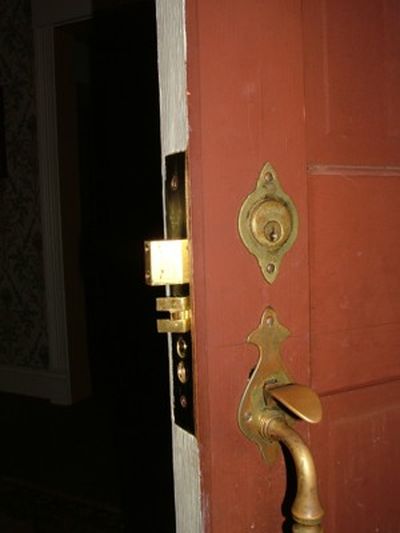Do an ‘autopsy’ on the door to find cause of sticky lock

Dear Tim: Several door locks at my home don’t work properly. When I try to extend the deadbolt lock, it will not turn all of the way. Several other regular door locks and deadbolts in my home are hard to turn. All of them used to work perfectly years ago. Are they just worn out and I need new locks, or is it some other issue? Greg B., Carnegie, Pa.
Dear Greg: Your deadbolt dilemma is fairly common. There are many reasons why door locks begin to stick and become problematic. Some can be traced to poor workmanship when they were installed, and Mother Nature can place a hex on these pieces of hardware if she gets cranky.
If you have ever had the pleasure to install a regular door lock, a deadbolt or a simple door handle, you will discover that the latch or bolt mechanism moves in and out with a fairly close tolerance. In other words, it doesn’t wobble much as it moves. Add to this the small opening in the metal keeper plate that is attached to the doorjamb and you can see that it is critical that the keeper and the latch mate almost perfectly.
It gets even trickier. The mortises that are created in the edge of the door and the one in the doorjamb must be cut square and with precision. Sometimes there are moving parts on the deadbolts and locks that can rub the wood if the mortise was not cut large enough or was cut at an angle other than square. You would be shocked to discover that an error as small as just 1/16 inch can cause a deadbolt or door lock to bind.
Since you say the locks used to work well, I will assume that they were installed correctly. You need to start an autopsy to find the cause of the problem. First, I would determine if the door is warped or if it doesn’t hang square in the frame. Either of these or a combination will cause a door lock to malfunction.
To see if the lock latch has dropped or risen in relation to the keeper plate in the jamb, I usually extend the latch and slowly allow the door to close so the latch is in contact with the outer edge of the metal keeper plate. Use a pencil to mark on the edge of the keeper plate the top and bottom points of the latch. Open the door and see if these line up with the top and bottom openings of the keeper. If not, you can move the keeper plate or use a rotary-grinding tool to enlarge the keeper. These tools work well and often solve the problem in a minute or less.
But before you turn on the grinder, you can check one or two other things quickly. See if the screws in the door hinges are completely tight. The top hinge is the most important one, as the force of gravity pulls at this hinge constantly. Frequently you will discover the hinge screws are not tight by just a half turn. Just tightening the screws may solve the problem.
While you are checking the hinge screws, tighten all of the screws that connect the door locks and deadbolts to the door. Do the same with the keeper plate in the doorjamb. Remember, the tolerances in the door locks are tight, and if one or more things are loose, all of them combined can lead to the door locks not working.
The issue may be seasonal swelling. This is a very common problem in parts of the country where the summer heat and humidity cause wood doors to swell. Perhaps the top and bottom of your doors were never sealed. You can check the bottom with a mirror, and stand on a ladder to see the top of the door. Wood doors must be sealed to ensure they do not warp or swell.